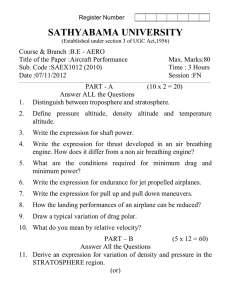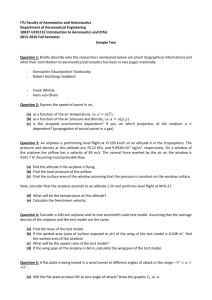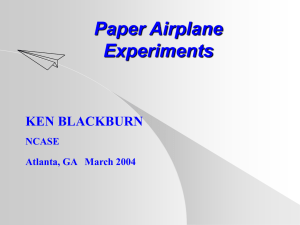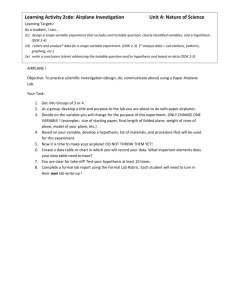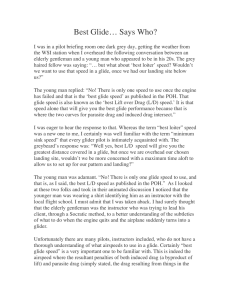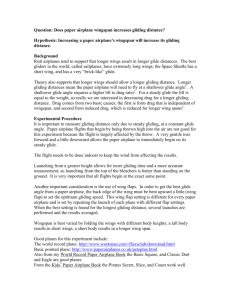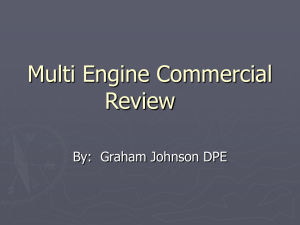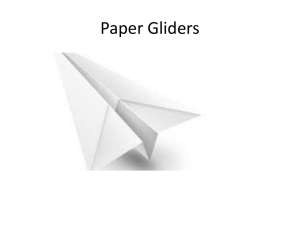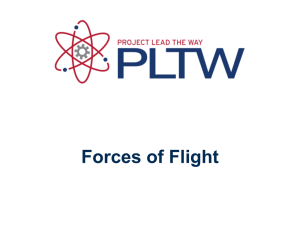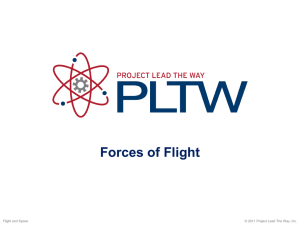Quiz 3 Worksheet
advertisement
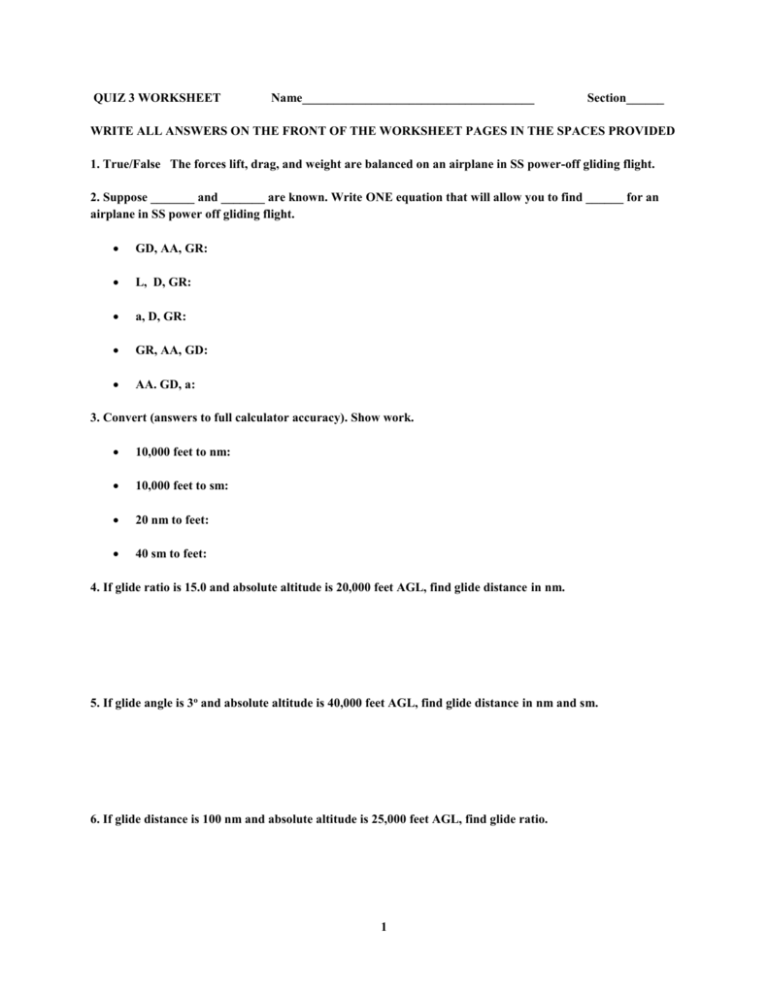
QUIZ 3 WORKSHEET Name_____________________________________ Section______ WRITE ALL ANSWERS ON THE FRONT OF THE WORKSHEET PAGES IN THE SPACES PROVIDED 1. True/False The forces lift, drag, and weight are balanced on an airplane in SS power-off gliding flight. 2. Suppose _______ and _______ are known. Write ONE equation that will allow you to find ______ for an airplane in SS power off gliding flight. GD, AA, GR: L, D, GR: a, D, GR: GR, AA, GD: AA. GD, a: 3. Convert (answers to full calculator accuracy). Show work. 10,000 feet to nm: 10,000 feet to sm: 20 nm to feet: 40 sm to feet: 4. If glide ratio is 15.0 and absolute altitude is 20,000 feet AGL, find glide distance in nm. 5. If glide angle is 3o and absolute altitude is 40,000 feet AGL, find glide distance in nm and sm. 6. If glide distance is 100 nm and absolute altitude is 25,000 feet AGL, find glide ratio. 1 7. Suppose VBG is175 KEAS with AOA = 15 Units at 300,000# gross. For 400,000# gross find VBG and the corresponding AOA. (Note: Instruments that display AOA are often calibrated in units rather than degrees.) Does changing gross weight affect glide distance? Circle one: GD increases decreases remains unchanged 8. From the formula GR = L/D, draw a one-sentence conclusion about the “best” lift to drag ratio for power off gliding flight. From this conclusion, explain how you can find V BG from an airplane’s DT / TR Curve. 9. True/False The slope of linear function (for example y = x) increase as x increases and decreases as x decreases. 10. True/False The slope of a straight line drawn from the origin tangent to an airplane’s drag polar has the same slope everywhere along the tangent line. 12. What variable is plotted on the vertical axis of an airplane’s drag polar? On the horizontal axis? 13. Suppose the line drawn from the origin tangent to an airplane’s drag polar has a slope of 11.55. How far can this airplane glide in nautical miles from 10,000’ AGL? 14. True/False Consider the line drawn from the origin tangent to an airplane’s drag polar. The shallower the slope of this line, the farther an airplane can glide from a given altitude AGL. 15. True/False For the drag polar plots used in AS310, the origin of the coordinate system (x = 0, y = 0) always occurs at the point where the two axes of the plot intersect. 16. Without referring to the course text or lecture notes, find the glide ratio of a B767 at Flaps-15 using Figure 4.14. Then compare your answer with the answer derived in the lecture notes. (Note: in this graph— as the figure makes clear—the origin of the coordinate system is NOT at the intersection of the two curves.) 2 17. True/False In the drag polars used in AS310, the x axis is labeled 0.0, 0.1, 0.2, 0.3, ,… and the y axis is labeled 0.00, 0.01, 0.02, 0.03, …. 18. Most airplanes glide further clean than with flaps down, even though dropping flaps changes the airplane’s cL vs. curve and increases lift. Explain this fact in terms of the lift-drag ratio of the airplane in the clean and dirty configurations. Why does the ratio decrease with flaps down even though L increases? 19. True/False It is possible to find both VBG and GRBEST from an airplane’s drag polar and also from its TR/DT curve. 20. The equation T = (m/t) V describes the thrust a jet engine produces. Define each of the terms—T, (m/t), and V. Explain how changes (m/t) and V change thrust. How do changes in density altitude affect (m/t). 21. In a sentence or two, explain the difference between a turbojet and a turbofan engine. 22. Name five instruments that a pilot uses to assess jet engine performance. Indicate the units of each instrument. Explain why the value each instrument measures is important. 3 23. For fixed density altitude (i.e. in SS SL flight), TA (thrust available) from a jet engine remains pretty much constant across an airplane’s airspeed regime, from VS to VNE. Explain why this is true in terms of changes in mass flow and V as airspeed increases from VS to VNE. 24. Explain how jet engine thrust changes as RPM varies from idle to 100%. Answer quantitatively—“it goes up” isn’t a satisfactory answer. For the engine in Figure 6.2, what percent of maximum thrust is available at 75% RPM? _______At 85%? _________At 90%? _________ 25. Figure 6.3 shows TA decreasing at fixed RPM as altitude increase. Explain why this happens in terms of the corresponding change in air density . To answer this question, you must discuss changes in mass flow as altitude increases. 26. Define jet engine TSFC. Explain why low TSFC is preferable to high TSFC. 27. Explain how TSFC at fixed density altitude varies as RPM increase from idle to 100%. 28. Figure 6.3 shows TSFC for a turbojet engine at fixed RPM decreasing as altitude increase up to the tropopause. Suppose SL fuel flow at 100% RPM for this engine is 10,000 pph. What would its fuel flow be at the same RPM at 30,000’ MSL? Show your work. 4
